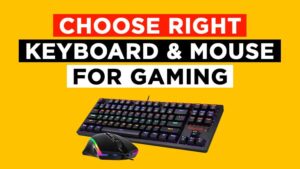Introduction
In the world of gaming and computer peripherals, two terms frequently mentioned are DPI and eDPI. These terms hold significant importance, especially for gamers, as they directly impact the accuracy and responsiveness of the mouse. Understanding the concept of DPI and eDPI is essential for gamers looking to enhance their gaming experience. In this article, we will delve into the details of DPI and eDPI, highlighting their meanings, applications, and differences.
Understanding DPI
Definition of DPI
What does dpi stand for? DPI stands for Dots Per Inch. It is a measurement used to determine the sensitivity of a mouse or any other input device. DPI refers to the number of individual dots or pixels that the mouse cursor moves on the screen when the mouse is moved one inch.
DPI in Computer Peripherals
DPI plays a crucial role in computer peripherals, particularly mice. A higher DPI means the mouse cursor moves more pixels on the screen for each physical movement of the mouse. This results in faster cursor speed and greater sensitivity. Conversely, a lower DPI setting makes the cursor move fewer pixels, leading to slower movement and lower sensitivity.
DPI in Gaming
In the realm of gaming, DPI holds immense significance. Gamers often require precise and swift movements in fast-paced games. Higher DPI settings allow for quicker cursor movement, enabling gamers to navigate the gaming environment swiftly. On the other hand, lower DPI settings provide more precision and control, which are essential for precise aiming in shooting games or making accurate movements in strategy games.
eDPI Explained
Definition of eDPI
eDPI, short for effective DPI, is a term specifically used in the context of gaming. It is the product of DPI and the in-game sensitivity setting. eDPI represents the combined sensitivity of both the mouse DPI and the in-game sensitivity.
Calculation of eDPI
To calculate eDPI, you multiply the DPI value of your mouse by the in-game sensitivity setting. For example, if your mouse DPI is 800 and the in-game sensitivity is set to 2, your eDPI would be 1600 (800 DPI x 2 in-game sensitivity).
DPI vs. eDPI: The Difference
DPI and eDPI are related but distinct concepts. DPI refers to the sensitivity of the mouse itself, while eDPI takes into account both the mouse DPI and the in-game sensitivity. DPI is a hardware setting that determines how many pixels the mouse cursor moves, while eDPI combines this with the software sensitivity setting to determine the overall sensitivity in games.
Importance of DPI and eDPI in Gaming
Accurate aiming, quick response times, and precise movements are essential in gaming, particularly in competitive gaming scenarios. DPI and eDPI directly influence the player’s ability to control their mouse movements and accurately aim in games. Finding the right DPI and eDPI settings can significantly enhance a player’s performance by providing optimal control and accuracy.
How to Choose the Right DPI and eDPI Settings
Factors to Consider
Choosing the ideal DPI and eDPI settings is subjective and varies from player to player. Several factors should be considered when determining the optimal settings. These factors include the player’s gaming style, the size of the monitor, the sensitivity preferences, and the game genre.
Finding the Ideal DPI and eDPI
To find the ideal DPI and eDPI, players often experiment with different settings to discover what feels most comfortable and provides the desired level of control. It is recommended to start with a moderate DPI and adjust the in-game sensitivity accordingly. From there, players can fine-tune the settings based on personal preference and performance feedback.
Common Misconceptions about DPI and eDPI
A higher DPI is Always Better
Contrary to popular belief, higher DPI does not necessarily translate to better gaming performance. While high DPI can offer swift cursor movement, it may result in decreased control and accuracy. The optimal DPI varies from player to player, and it is crucial to find the balance between speed and precision based on personal preferences and gaming style.
eDPI Determines Skill Level
eDPI alone does not determine a player’s skill level. Skill in gaming involves a combination of factors, including strategy, reflexes, decision-making, and game knowledge. While having an appropriate eDPI setting can aid in control and accuracy, it is not the sole determinant of skill.
Conclusion
DPI and eDPI are vital concepts in the world of gaming and computer peripherals. Understanding the differences between DPI and eDPI and how they impact gaming performance is crucial for gamers aiming to optimize their gaming experience. Finding the right DPI and eDPI settings tailored to individual preferences and gaming styles can greatly enhance control, accuracy, and overall gameplay.
5. FAQ
What is the optimal DPI for gaming?
The optimal DPI for gaming varies based on personal preference. It is recommended to start with a moderate DPI setting and adjust accordingly.
Does eDPI affect in-game accuracy?
Yes, eDPI plays a role in in-game accuracy as it determines the overall sensitivity of the mouse cursor.
Can I use different DPI settings for different games?
Yes, most gaming mice allow for customizable DPI settings, making it possible to use different DPI configurations for different games.
Is higher DPI better for graphic design?
Higher DPI settings can be beneficial for graphic design tasks that require precise movements and control.
Can I change DPI and eDPI on any mouse?
DPI settings can be adjusted on most gaming mice, but eDPI settings are typically configured within the game settings rather than on the mouse itself.





